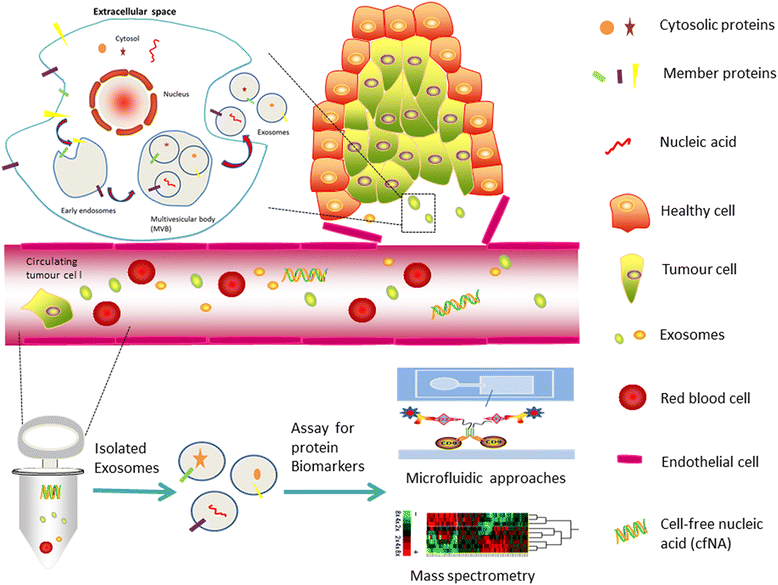Exosomal proteins as potential markers of tumor diagnosis
- PMID: 29282096
- PMCID: PMC5745959
- DOI: 10.1186/s13045-017-0542-8
Exosomal proteins as potential markers of tumor diagnosis
Abstract
Liquid biopsy especially that of exosomes carries tumor-specific molecules and provides useful information during tumor development and progression in "real time." Exosomes are membrane-encapsulated vesicles, constantly released by multiple cells, including cancer cells, in large quantities, and are widely present in body fluids. Tumor exosomes can remodel a tumor-supportive microenvironment via cross-talk with target cells. Recent research has mainly focused on exosomal miRNAs and to a small degree on proteins. However, detecting the genome output (active proteins such as phosphoproteins) can provide more direct information about disease progression, such as in the early discovery and monitoring of cancers. This review highlights the unique features of exosomal proteins over traditional serological markers and summarizes their recent use in cancer diagnosis and prognosis. Furthermore, we describe the general protocols of research on exosome proteomics with an emphasis on their clinical use.
Keywords: Cancer biomarker; Detection; Exosomal proteins; Exosomes; Isolation.
Conflict of interest statement
Ethics approval and consent to participate
Not applicable
Consent for publication
Not applicable
Competing interests
The authors declare that they have no competing interests.
Publisher’s Note
Springer Nature remains neutral with regard to jurisdictional claims in published maps and institutional affiliations.
Figures

References
-
- Nolan JP. Flow cytometry of extracellular vesicles: potential, pitfalls, and prospects. Curr Protoc Cytom. 2015;73:13.14.11–13.14.16. - PubMed
Publication types
MeSH terms
Substances
LinkOut - more resources
Full Text Sources
Other Literature Sources
Medical

